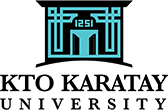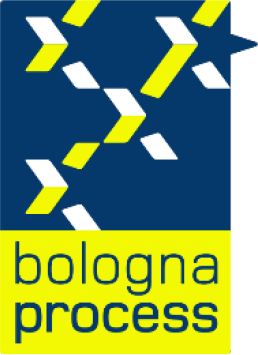Medical Imaging Techniques
Course Details

KTO KARATAY UNIVERSITY
Vocational School of Medical Services
Programme of Medical Imaging Techniques
Course Details
Vocational School of Medical Services
Programme of Medical Imaging Techniques
Course Details

| Course Code | Course Name | Year | Period | Semester | T+A+L | Credit | ECTS |
|---|---|---|---|---|---|---|---|
| 99401012 | Nuclear Energy and Its Requirement | 1 | Autumn | 1 | 2+0+0 | 3 | 3 |
| Course Type | Elective |
| Course Cycle | Associate (Short Cycle) (TQF-HE: Level 5 / QF-EHEA: Short Cycle / EQF-LLL: Level 5) |
| Course Language | Turkish |
| Methods and Techniques | - |
| Mode of Delivery | Face to Face |
| Prerequisites | - |
| Coordinator | - |
| Instructor(s) | - |
| Instructor Assistant(s) | - |
Course Content
Energy sources and Nuclear energy / Mass-Energy relationship and atomic reactions / Fusion and Fission energies / Radioactivity / Nuclear reactor physics / Chain reaction and multiplication coefficient / Neutral loss and Critical conditions / Critical size calculation / Introduction to nuclear power reactors / Classification of nuclear power plants and technical specifications / Basic elements of reactors / Operating characteristics of reactors / Nuclear fuel cycles / Economic and ecological evaluation of nuclear energy
Objectives of the Course
To teach basic information about nuclear energy and nuclear power plants.
Contribution of the Course to Field Teaching
| Basic Vocational Courses | |
| Specialization / Field Courses | |
| Support Courses | X |
| Transferable Skills Courses | |
| Humanities, Communication and Management Skills Courses |
Relationships between Course Learning Outcomes and Program Outcomes
| Relationship Levels | ||||
| Lowest | Low | Medium | High | Highest |
| 1 | 2 | 3 | 4 | 5 |
| # | Program Learning Outcomes | Level |
|---|---|---|
| P | 3 | |
| P10 | The individual has the ability to use the information he/she obtains from different disciplines in a personal way, in line with his/her interests and abilities. | 5 |
Course Learning Outcomes
| Upon the successful completion of this course, students will be able to: | |||
|---|---|---|---|
| No | Learning Outcomes | Outcome Relationship | Measurement Method ** |
| O1 | Being able to make sense of the information an individual will obtain from different disciplines in line with their interests and abilities. | P.10.1 | 1 |
| O2 | Being able to explain the information that an individual will obtain from different disciplines in line with their interests and abilities. | P.10.2 | 1 |
| O3 | The ability to use the information obtained from different disciplines in line with the individual's interests and abilities in his/her own field. | P.10.3 | 1 |
| O4 | Ability to analyze application results using information obtained from different disciplines in line with the individual's interests and abilities. | P.10.4 | 1 |
| O5 | The ability to create a new structure by combining the information obtained from different disciplines and the information in one's own field in line with the individual's interests and abilities. | P.10.5 | 1 |
| O6 | Being able to evaluate the information that an individual will obtain from different disciplines in line with their interests and abilities. | P.10.6 | 1 |
| ** Written Exam: 1, Oral Exam: 2, Homework: 3, Lab./Exam: 4, Seminar/Presentation: 5, Term Paper: 6, Application: 7 | |||
Weekly Detailed Course Contents
| Week | Topics |
|---|---|
| 1 | Energy sources and Nuclear energy |
| 2 | Mass-energy relationship and Atomic reactions |
| 3 | Fusion and Fission Energies, Radioactivity |
| 4 | Nuclear Reactor Physics |
| 5 | Chain Reaction and Multiplication Coefficient |
| 6 | Neutron loss and Critical conditions |
| 7 | Critical dimension calculation |
| 8 | Midterm |
| 9 | Classification and technical characteristics of power reactors |
| 10 | Classification and technical characteristics of power reactors |
| 11 | Basic elements of power reactors |
| 12 | Operating characteristics of reactors |
| 13 | Basic elements of power reactors |
| 14 | Nuclear fuel cycles |
| 15 | Nuclear fuel cycles |
| 16 | Final Exam |
Textbook or Material
| Resources | Aybers N., Bayülken A,"Nuclear Reactor Engineering-I"I.T.U. Publications, Gümüşsuyu, 1990. |
Evaluation Method and Passing Criteria
| In-Term Studies | Quantity | Percentage |
|---|---|---|
| Attendance | - | - |
| Laboratory | - | - |
| Practice | - | - |
| Field Study | - | - |
| Course Specific Internship (If Any) | - | - |
| Homework | - | - |
| Presentation | - | - |
| Projects | - | - |
| Seminar | - | - |
| Quiz | - | - |
| Listening | - | - |
| Midterms | 1 | 40 (%) |
| Final Exam | 1 | 60 (%) |
| Total | 100 (%) | |
ECTS / Working Load Table
| Quantity | Duration | Total Work Load | |
|---|---|---|---|
| Course Week Number and Time | 14 | 2 | 28 |
| Out-of-Class Study Time (Pre-study, Library, Reinforcement) | 14 | 2 | 28 |
| Midterms | 1 | 10 | 10 |
| Quiz | 0 | 0 | 0 |
| Homework | 0 | 0 | 0 |
| Practice | 0 | 0 | 0 |
| Laboratory | 0 | 0 | 0 |
| Project | 0 | 0 | 0 |
| Workshop | 0 | 0 | 0 |
| Presentation/Seminar Preparation | 0 | 0 | 0 |
| Fieldwork | 0 | 0 | 0 |
| Final Exam | 1 | 15 | 15 |
| Other | 0 | 0 | 0 |
| Total Work Load: | 81 | ||
| Total Work Load / 30 | 2,70 | ||
| Course ECTS Credits: | 3 | ||
Course - Learning Outcomes Matrix
| Relationship Levels | ||||
| Lowest | Low | Medium | High | Highest |
| 1 | 2 | 3 | 4 | 5 |
| # | Learning Outcomes | P10 |
|---|---|---|
| O1 | Being able to make sense of the information an individual will obtain from different disciplines in line with their interests and abilities. | 5 |
| O2 | Being able to explain the information that an individual will obtain from different disciplines in line with their interests and abilities. | 5 |
| O3 | The ability to use the information obtained from different disciplines in line with the individual's interests and abilities in his/her own field. | 5 |
| O4 | Ability to analyze application results using information obtained from different disciplines in line with the individual's interests and abilities. | 5 |
| O5 | The ability to create a new structure by combining the information obtained from different disciplines and the information in one's own field in line with the individual's interests and abilities. | 5 |
| O6 | Being able to evaluate the information that an individual will obtain from different disciplines in line with their interests and abilities. | 5 |
